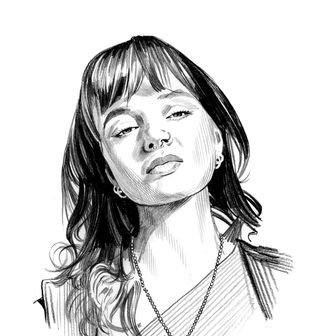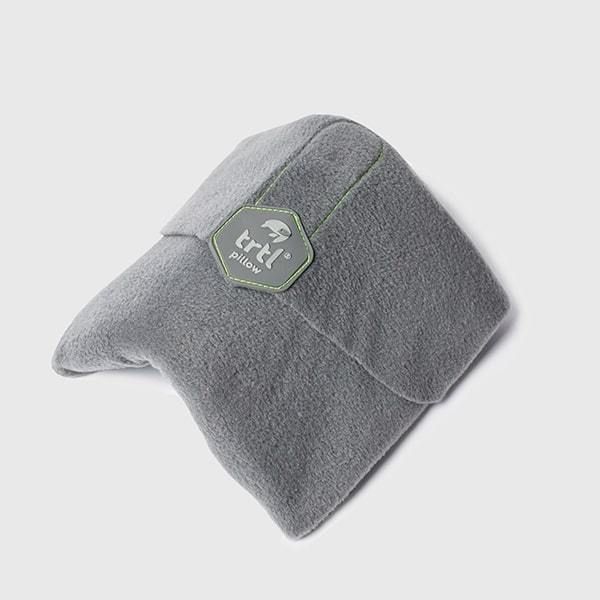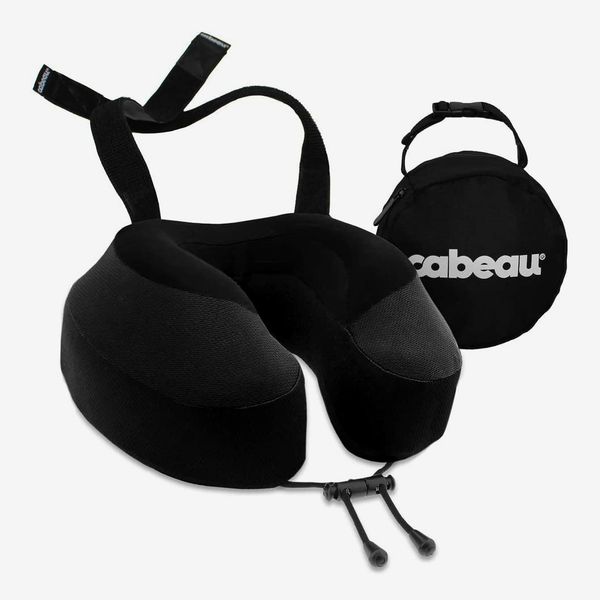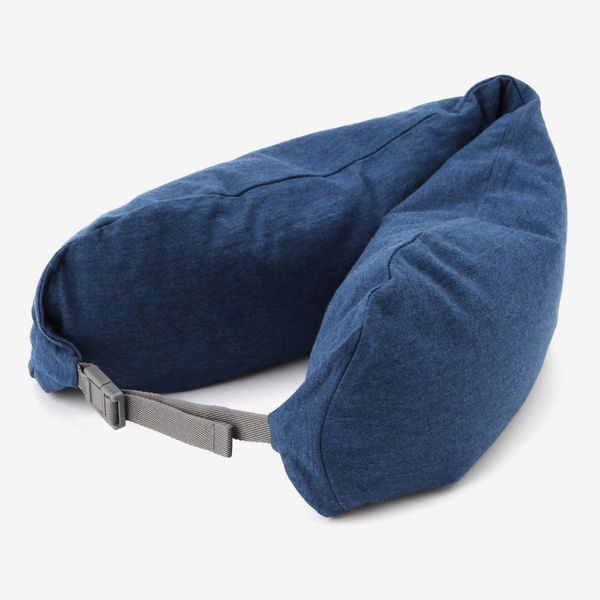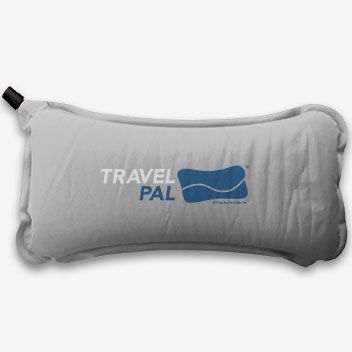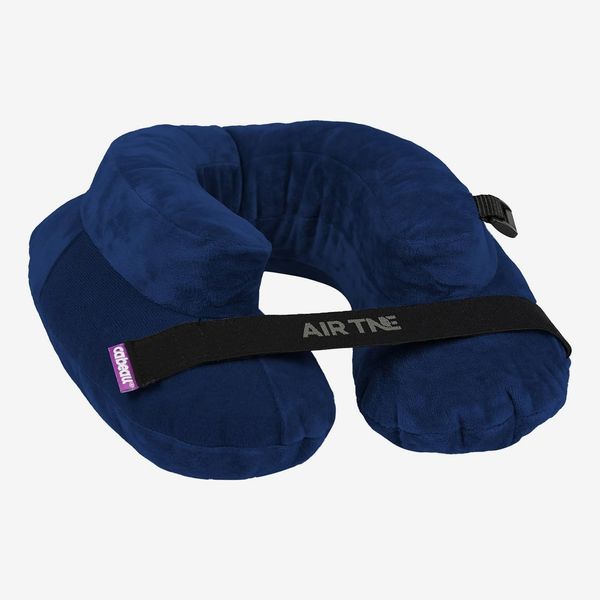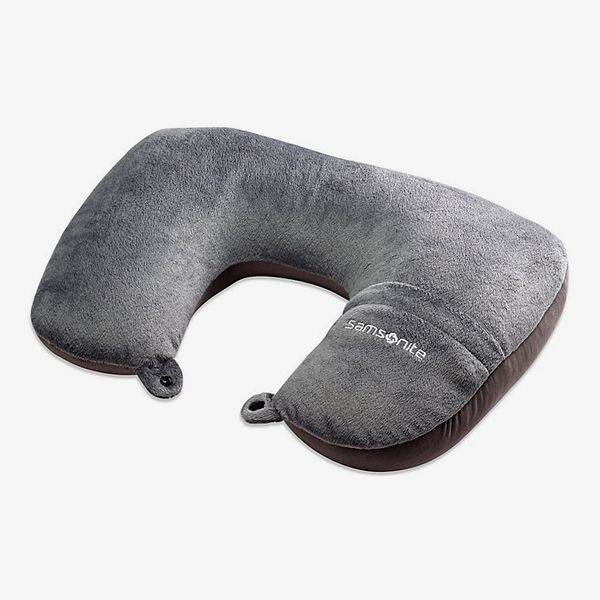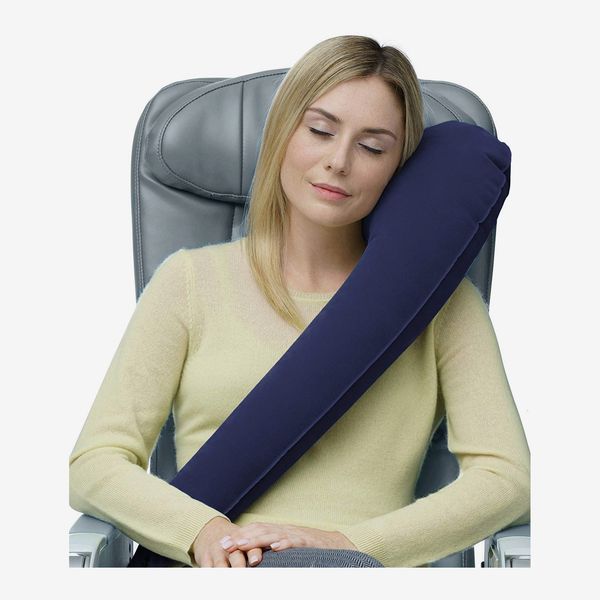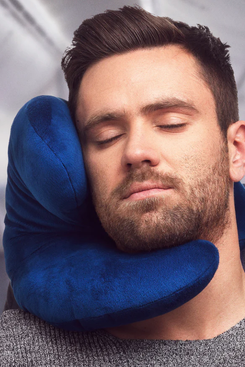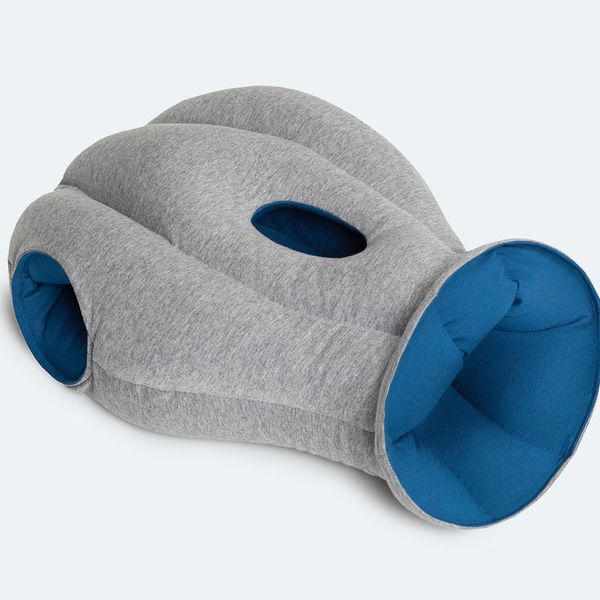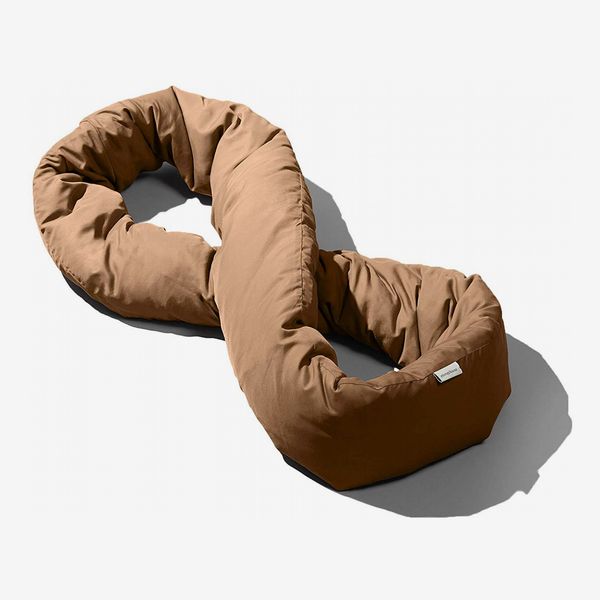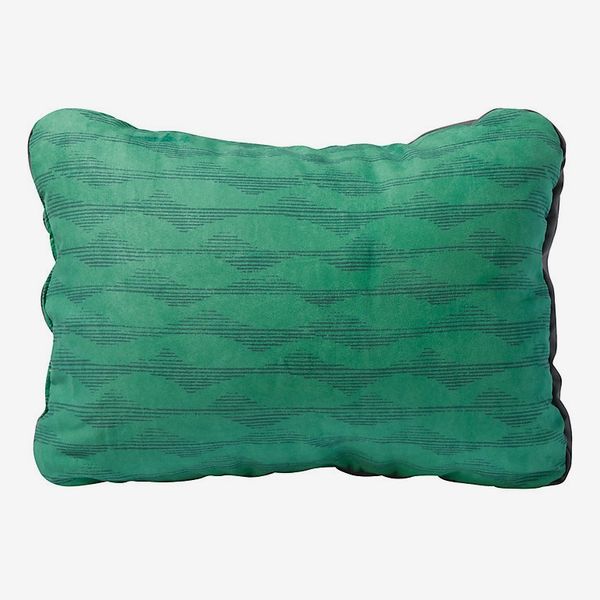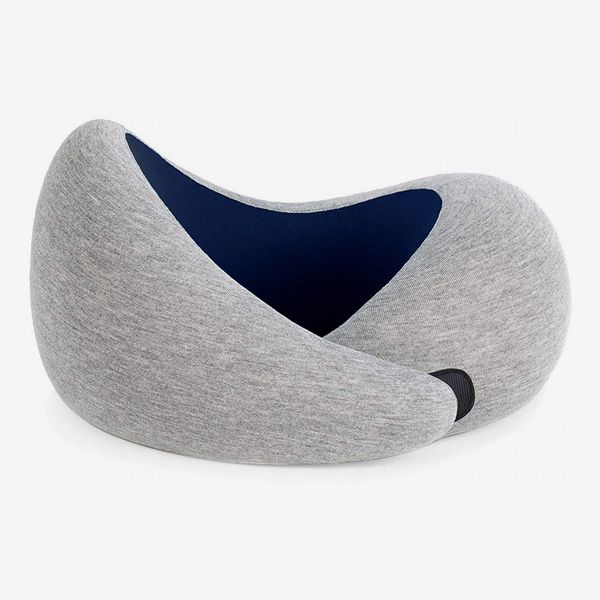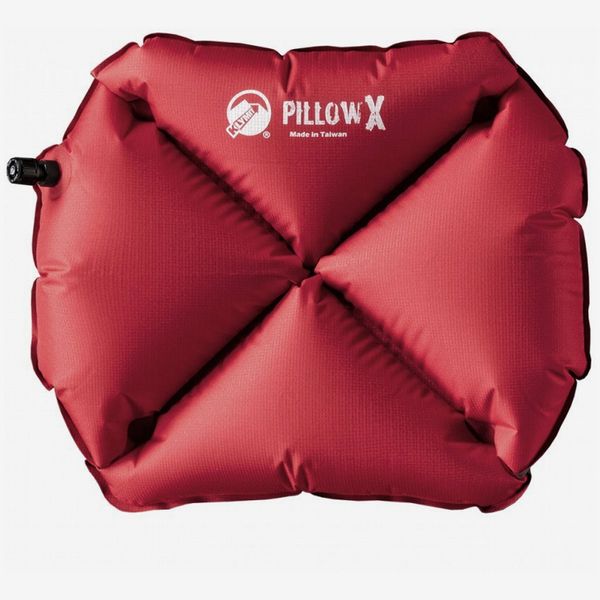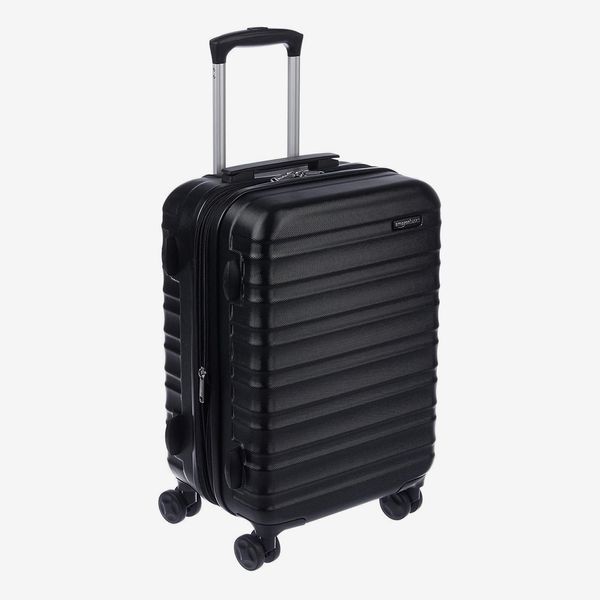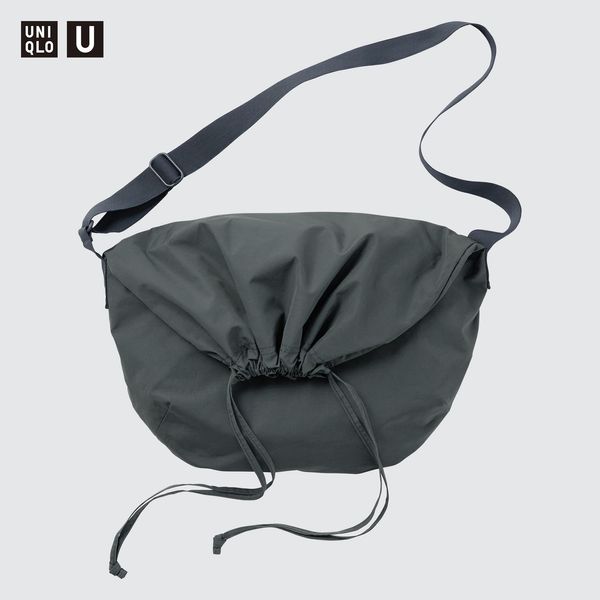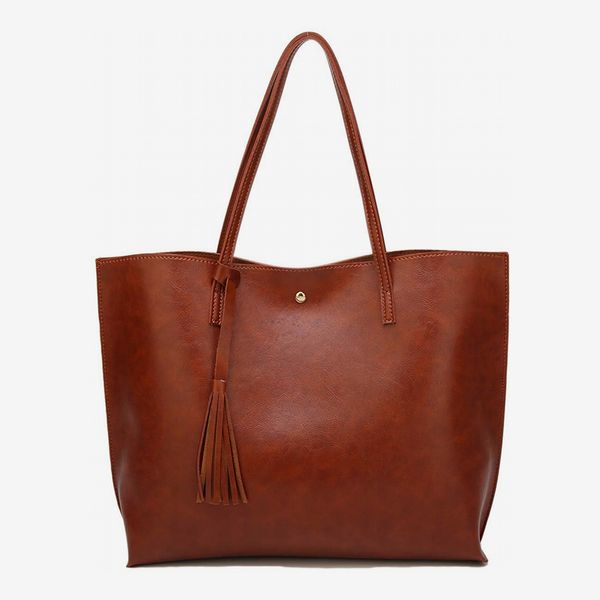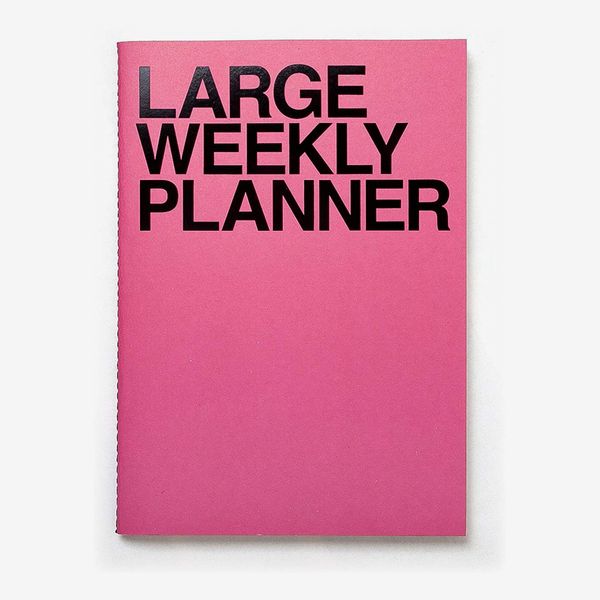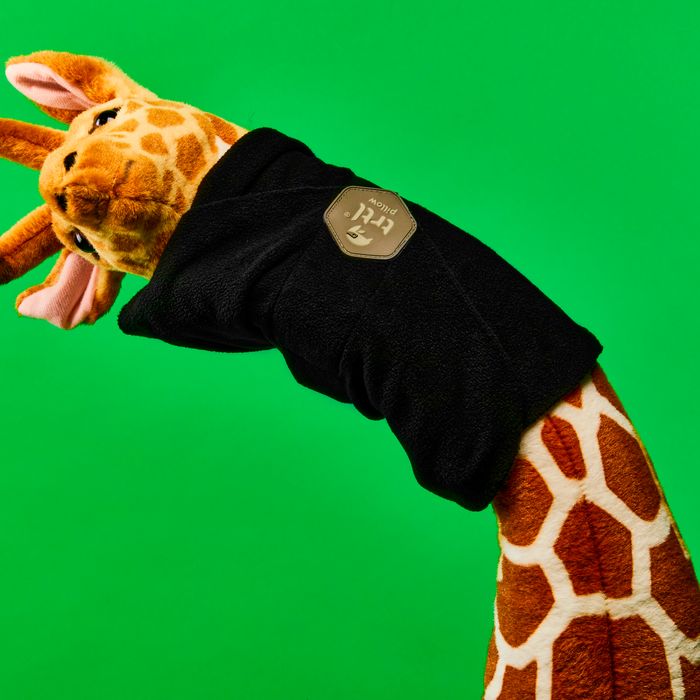
In this article
You’ve tried an uncomfortable slouch against the window. You’ve hunched over the tray table. You’ve even slyly eyed up your neighbor’s shoulder as a potential headrest. Let’s face it: Unless you’re in first class, getting rest on a long-haul flight is never easy. We’re not only physically cramped and uncomfortable, but “when we’re traveling, we’re just a bit less able to really, truly relax,” says Dr. Rebecca Robbins, a sleep specialist and Harvard Medical School instructor.
Besides foot slings and natural sleep aids, a pillow is necessary for even attempting sleep on a flight. There are the ones the airlines give you, neck pillows, lumbar pillows, and even pillows for your entire head. To find out which of these are the best, we talked to picky people who log a lot of miles, two chiropractors, and a spine surgeon to find comfortable, safe, and supportive options — including the pillow that helped me beat jet lag when I traveled from London to Seoul, and one that makes sleeping in the dreaded middle seat actually possible.
What we’re looking for
Shape
First, consider the type of travel pillow you’re interested in. U-shaped versions that go around the neck or traditional flat pillows that have been shrunken down for portability are most common. U-shaped pillows are designed to prevent lateral bending in the neck — “it’s that move to sort of pinch the cell phone between your shoulder and ear,” says Dr. Carla Fischer, the director of quality and patient safety at NYU Langone Spine Center. That bending to the side, she says, is the most important thing to prevent, but not everyone sleeps in the same position or has the same concerns, which is where other styles come in handy. A mini flat pillow could be used to lean up against a window, on a tray table, on a neighbor’s shoulder, or, most effectively, as lumbar support. “In a proper chair, the lumbar part should actually push out to support that curve in your low back, but they don’t do that on planes because if they did, it would affect their seating, so a lot of them curve in,” says Dr. Jared Hoffman of Williamsburg Chiropractic. Not supporting the low back increases stress on the joints of the low back and the discs, which can result in muscle spasms, especially if you have a history of low-back pain. The consensus, however, is that supporting the neck is the most important for most people in regard to comfort and safety, but other styles are still beneficial depending on the circumstances, which is why they’ve earned a spot on this list too.
Fill
Below you’ll find pillows made with memory foam, filled with beads, or just air if they’re inflatable. Dr. Claire Fitzpatrick, founder of Bed Stuy Chiropractic, believes that memory foam is the most “accommodating” when it comes to travel. When I asked her what she meant, she explained that “if you get a medium to medium-firm memory-foam sort of pillow, it accommodates you, but it doesn’t let you dig into it too much.” Some are too soft and will allow your head to flop over too far, but something firm, that will conform to your neck shape, will keep it in the right position. Other fills like beads, buckwheat, and cotton can also be accommodating, so long as they hit that firm sweet spot.
Thickness
Which brings me to thickness, an especially important thing to consider when it comes to neck pillows. “The sides should come up to the height of your earlobes,” says Wainani Arnold, founder of the Wainani Wellness Center and in-flight wellness expert for Hawaiian Airlines. “The back of the neck pillow should be flat or only as thick as the distance between the back of your neck to the back of your head (one to two inches). If it is too thick in the back, the pillow will push your neck forward from the chair too much and will potentially dump your head back, which is not ideal for your neck.” A pillow thick enough to come up to your earlobes would certainly be tall enough to minimize the lateral bending, which is what Dr. Fischer recommends too. Ultimately “thicker, taller, more firm is going to do better,” she says.
Easy to pack
A travel pillow is another item on a long list of things to carry and remember when traveling. Between a carry-on and a personal item, both stuffed to the brim, finding room for something as large as a pillow can be cumbersome. The most packable among travel pillows are the inflatable ones. Deflated, they’re pretty compact and can be stored anywhere, inflated while you’re on the plane, and deflated once again before you get off and stored away. Others filled with memory foam or cotton are a little trickier to deal with but still manageable. Neck pillows often have a snap closure at the front which can easily be used to secure it to the handle of your suitcase.
Best overall travel pillow
Shape: Neck pillow | Fill: No fill | Thickness: Thin | Easy to pack
This travel neck pillow is not the traditional U-shape, it has no fill, and is very thin, but it still takes the top spot on our list. It has the most recommendations from our experts and achieves the main goal of a neck pillow — to prevent lateral bending in the neck — in the most compact way. Its design is unique to anything else on this list. It’s more like a padded scarf, but has a plastic brace inside that supports the head, explains Pack Hacker editor Lauren Maternowski. The brace is only in one part of the pillow, but you can adjust it “so you’ll have to choose which side you prefer nodding off toward,” says Lauren Shwartzberg, who told us about Trtl way back in 2017. Because it’s so thin and there’s no padding around the back of the neck, “you can fully lean against your seat’s headrest,” adds Maternowski. Strategist associate director of e-commerce-audience development Rosie Percy says that, with the adjustable Trtl, she was “able to sleep through a flight for the first time in my adult life, touching down feeling refreshed and without a crick in my neck.” Points Guy travel editor Madison Blancaflor agrees with: “It’s the only way I can survive long-haul flights in economy.”
I tested out the Trtl on a recent 12-hour flight to Seoul. I’ve never had much luck with classic travel pillows; I can’t get over the gap that they wedge between you and the seat or the vague feeling of being choked if you slump down at the wrong angle. With the Trtl, though, I was out like a light. The brace’s angle hits just right: Not sloping so much that your neck bends unnaturally, but supportive enough for you to relax into a decent sleep.
Scott Keyes of Scott’s Cheap Flights echoes my praise. “What I like about it is its versatility,” he says. “It lets you sleep decently even if you’re in the middle seat and prevents you from waking up with a stiff airplane neck. And unlike bulky pillows, this one is small enough to easily tuck into your backpack.” And so the Trtl is our best pick overall because it’s highly rated by people who don’t usually even use travel pillows, as well as those who’ve tested a lot to find their favorite.
Best memory-foam travel neck pillow
Shape: Neck pillow | Fill: Memory foam | Thickness: 5 inches | Easy to pack
A more traditional travel pillow is this version from Cabeau. It’s a U-shaped neck pillow with a thick padding of memory foam for firm support. The back of the neck squares off a bit, which is ideal for keeping your neck in line with the back of the seat. “Ultimately it needs to be flush with the chair,” says Dr. Fitzpatrick. “Your spine needs to be flush with the chair, and that’ll be more comfortable and safer for you.” She says this is especially true for people with a straighter spine. This pillow additionally has a strap that attaches to the back of the headrest to help you stay up straight even more. If you do flop to the front, Arnold says this pillow keeps your jaw supported. “You won’t be caught open-mouth breathing, which is, one, not very attractive and, two, dehydrating,” she says. Carmen Sognovi, who blogs about her family’s travels, always gets jolted awake when her head drops forward as she sleeps on a plane. She wears this pillow “the ‘wrong’ way around with the ends of the U shape at the back of my neck. That way my chin is always supported and I don’t get awoken by these head drops,” she says. The Cabeau takes up more space than the Trtl, but is still easy to carry. It comes with a bag that compresses it to half its size, and you can use the bag’s strap to fasten the pillow to your carry-on.
Best bead-filled travel neck pillow
Shape: Neck pillow | Fill: Polystyrene beads | Thickness: 6.3 inches | Easy to pack
This Muji pillow is over an inch taller than the Cabeau, but because it’s filled with polystyrene beads — the same stuff they put in bean bag chairs — it’s not as firm, which is appealing if you want to sink in a little deeper. Stella Shon, a writer at The Points Guy, confirms that this pillow is less rigid than the memory-foam options, which she prefers. “Muji has crafted the perfect neck pillow,” she says. “It’s low profile, completely plush, and best of all, it’s Martha Stewart approved!” Stewart said in an interview with the Points Guy Brian Kelly that Muji’s neck pillows are the best. In addition to the minimalist look, “They really do offer the support you need,” she says. “They’re covered with a nice jerseylike material instead of fattener.” Shon also appreciates the clip that makes it somewhat adjustable. The same clips can be used easily to secure the pillow to a bag.
Best inflatable travel lumbar pillow
Shape: Lumbar pillow | Fill: Inflatable | Thickness: 2 inches | Easy to pack
Inflatable travel pillows are arguably the easiest to travel with. Yes, you have to blow them up, but they are the most compact when deflated, which makes them the easiest to pack. The Travel Pal, a favorite of Dr. Hoffman’s, is a lumbar pillow that grows to two inches thick once it’s inflated. He thinks that low-back support, which you don’t get in an airplane seat, is crucial. He says that a lot of plane seats curve in where they actually should curve out in the lumbar area. Supporting that low-back curve is so important because it reduces stress on the joints and discs of your low back, and this pillow helps with that. Dr. Hoffman not only recommends it to patients, but says “this I have used personally and I think it’s one of the best products I’ve come across.”
Best inflatable travel neck pillow
Neck pillows come in inflatable options too. From the same brand as our favorite memory-foam pillow, this Cabeau inflates to five inches thick, but is just the size of a soda can when deflated. Just like the memory-foam pillow, this one has a flat back to help keep your neck in line with the seat, but it has the addition of a tiered structure and a neck strap to keep your head super-stable. “They are a bit higher than most neck pillows and have a special toggle you can connect and tighten so the pillow doesn’t fall off,” says Jennifer Lachs of Digital Nomad Girls. Lachs admits that the memory-foam pillow above is “even more comfortable,” but the inflatable is better if you want to travel light. Initially I thought that inflatable was synonymous with adjustable — the more air you put in the taller it will be and less air will make it less firm — but Dr. Fischer said it’s a bad idea to not fill up these pillows all the way, as that’s not how they were designed to be used.
Best convertible travel pillow
Shape: Neck and lumbar pillow | Fill: Not listed | Thickness: 2 inches | Average packability
If you aren’t exactly sure if you’ll need neck support or lumbar support, a convertible pillow like this might be your best bet. This neck pillow folds up into a square-shaped pillow that can then be used on your lower back or up against a window. “It’s super-comfy, and it folds into a pocket,” says Taryn White of The Trip Wish List. “We all know that airplanes and airports are not very clean, so being able to keep the pillow from coming into contact with tons of germs was a huge selling point.” It has a less convenient hook (compared to a strap) to secure it to your luggage, but the snaps that close the front of the pillow provide another option for strapping it on. The detail White is more concerned with is the storage. She says, “It has pockets in which I can store earbuds, gum, and mints.” The fill used in this travel pillow is not listed, but according to one Bed, Bath & Beyond reviewer it’s “firm but not [too] hard for me & my aching neck.”
Best travel pillow for the middle seat
Shape: Neck pillow | Fill: Inflatable | Thickness: 3.5 inches | Easy to Pack
On a recent flight to Italy, I chose the dreaded middle seat on purpose to see how well the Travelrest really works. The inflatable pillow is worn like a sash, and it gives you something to loll your head against (apart from the person sitting next to you.) “I’m obsessed with this hideous inflatable golf club,” says travel writer Teddy Minford, who first told us about the unique travel pillow. “It creates something to lean against, even if you’re in the middle seat.” After testing it, I agree with Minford that the pillow gives you something to rest your head against — and I successfully managed to get a few hours of sleep on my early flight. However, I’m not a middle-seat convert just yet. I still felt myself sloping a little towards the side I was resting on. I was overall impressed with how much the pillow improved the usually uncomfortable experience of middle seating, though, and it was super easy to transport: When deflated, it rolls up to the size of an iPhone.
Best travel pillow for the window seat
Shape: Head and neck pillow | Fill: Polyester filling | Thickness: 3 inches | Average packability
Mercedes Arielle is a window-seat person and says this J-Pillow is best at cradling her head, shoulder, and chin on flights. The pillow’s almost claw shaped with a main body that supports the crook of your neck and a cushion extending below the chin to stop your head from sliding forward. To Arielle, that three-pronged support is essential “because I rest my head against the window so I can maximize every inch of my window seat.” Since buying her J-Pillow, she says she “gets sound uninterrupted sleep on flights rather than being restless and uncomfortable waking up every few minutes” and suffers less jet lag. You can compress the pillow to half its size in a carry bag, then use its loops to attach it to your luggage.
Best travel pillow for tray-table sleeping
Shape: Head pillow | Fill: Polystyrene microbeads | Thickness: Not listed | Not easy to pack
As important as supporting the neck is, if you don’t sleep on your side, a neck pillow is useless. Dr. Fitzpatrick recommends considering how you sleep when you travel and getting a pillow that accommodates that. For those who lean forward and rest their head on their neighbor’s seat in front of them, or on the tray table, she recommends this pillow that’s more like a helmet. It covers all sides, including the forehead, so it can be used in a number of situations. There is a hole for your mouth so you can breathe, but otherwise it’s a pillow, an eye mask, and noise-canceling headphones all in one. Once out of the box, there is no indication that this pillow will compress again, making it very difficult to travel with.
Best pillow for traveling with kids
Shape: Neck pillow | Fill: Polyester filling | Thickness: Not listed | Easy to pack
Writer and mum of one Chantel Tattoli says this Huzi pillow has an almost mystical effect on her daughter on long flights. “Generally, she seems to accord a magical ‘fairy-ring’ quality to this fluffy circle, as if once she’s thrown it over her, she’s staked some space in which things are pretty good,” she says. The pillow, like an extremely plush scarf, can wrap around your neck or lower back — or even both at the same time — to create a highly customized, optimum sleeping position. For this reason, it’s a great pick for those with scoliosis, too. “Even mild scoliosis can affect your comfortable position in a tight seat,” says Dr. Fitzpatrick. “The adjustable lemniscate-type pillows can be good for this.” Wearing it through the airport like a scarf also makes it easy to carry, but if you’d rather throw it in your bag, it rolls up neatly into a little ball.
Some more travel pillows we’ve written about
Our experts
• Mercedes Arielle, fashion and travel blogger at Calculated Opulence
• Wainani Arnold, founder of the Wainani Wellness Center and in-flight wellness expert for Hawaiian Airlines
• Dr. Carla Fischer, director of quality and patient safety at NYU Langone Spine Center
• Dr. Claire Fitzpatrick, founder of Bed Stuy Chiropractic
• Dr. Jared Hoffman, Williamsburg Chiropractic
• Scott Keyes, Scott’s Cheap Flights
• Jennifer Lachs, founder of Digital Nomad Girls
• Kat Lopez, freelance writer
• Lauren Maternowski, editor at Pack Hacker
• Teddy Minford, Travel Writer
• Rosie Percy, Strategist associate director of e-commerce-audience-development strategy
• Dr. Rebecca Robbins, a sleep specialist and Harvard Medical School instructor
• Stella Shon, writer at The Points Guy
• Carmen Sognovi, travel blogger
• Chantel Tattoli, freelance writer
• Taryn White, founder of The Trip Wish List
The Strategist is designed to surface the most useful, expert recommendations for things to buy across the vast e-commerce landscape. Some of our latest conquests include the best acne treatments, rolling luggage, pillows for side sleepers, natural anxiety remedies, and bath towels. We update links when possible, but note that deals can expire and all prices are subject to change.
Every editorial product is independently selected. If you buy something through our links, New York may earn an affiliate commission.
